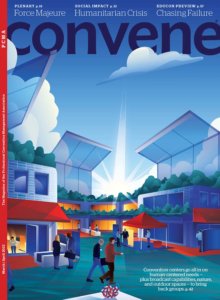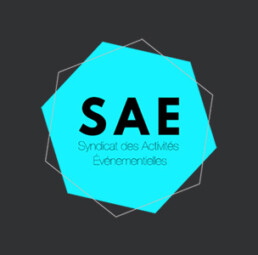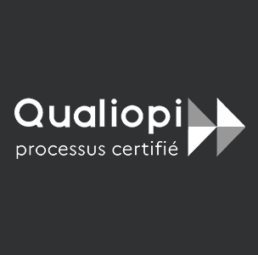How Convention Centers Are Evolving in a New Events Landscape
Source : PCMA
Author: Convene Editors
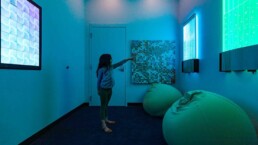
For those who design, operate, manage, and sell space in convention centers, looking ahead is part of the job description. But the magnitude of the global disruptions and shifts in travel and work that have come about over the last two years can make it feel as if the pandemic has reinvented business events.
In Convene‘s March-April CMP Series and cover story, our editors share how seven convention centers are responding to the challenge by experimenting with new models — and doubling down on the experience of human connection.
Scroll down or click the links below to read each convention center’s story.
LEARN AND EARN
Earn one clock hour of certification by visiting the Convene CMP Series page to answer questions about these articles and read the article, “What’s Next for the Meeting Industry?”
The Certified Meeting Professional (CMP) is a registered trademark of the Events Industry Council.
Seattle’s ‘Places-Where-People-Actually-Connect Spaces’
When planning began in 2015 for an expansion of the Washington State Convention Center in downtown Seattle, the assignment given to the project’s designers, LMN Architects Seattle, was to build the convention center of the future, said Kelly Saling, Visit Seattle’s senior vice president and chief sales officer. Construction on the center began in 2018.
And then in 2020, the future changed.
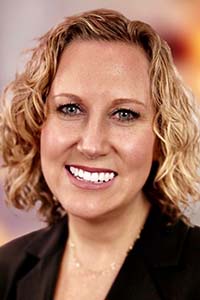
Kelly Saling
Now, as Visit Seattle prepares for the expansion to open in 2023, Saling said, “we get to see if [the convention center design] is pandemic proof.” In other words, would the projections architects made about what the building’s users would want in the future hold up amid the changes brought by the last two years? “I give [LMN Architects Seattle] a lot of credit for their vision,” Saling said. Because in general, the things they predicted would be important in the future, she said, “are some of the themes that I think we’re all eager to lean into post pandemic.”
One of the trends Saling noted is the heightened importance of flexible space for collaboration. During months of the forced cancellation of in-person meetings, we’ve been forced to “sort of distill things down to what matters, to what we can do in different ways and what we can’t accomplish in those ways,” Saling said. “I think that all of our eyes are opened to what we can accomplish in the digital sphere, in a way that we wouldn’t have gotten to as quickly had it not been accelerated by need. And we’ve also learned what’s missing online — the sense of human connection and inspiration, and the ideation that comes from being together.”
One of the primary architectural features of the new building naturally lends itself to such collaboration, Saling said. It’s called the Hill Climb, a broad, oversized wooden staircase, accessible from all six levels of the building, which rises diagonally on one side of the building alongside a glass wall with a view of Puget Sound. “It’s a place to sit and mingle or to plug in your devices and get your work done,” Saling said. Like the stairwell, the center’s foyers and hallways offer more than just a way to travel from one place to another, she said. The emphasis is on “the places-where-people- actually-connect spaces and the what-happens-outside-the-class spaces.” Customers are thinking about space in new, more flexible ways, she added. “They’ll say, ‘We need three large spaces, and we need two breakouts and the rest of the space — people will use it however they use it.’”
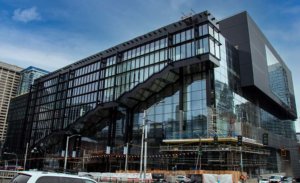
Seattle’s new center addition is in the heart of downtown. You can go to Pike Place Market “and back easily in a half-hour break,” said Kelly Saling. (Courtesy of Visit Seattle)
And after two years of working from home and enduring travel restrictions, people are yearning for an authentic sense of place, she said. “People don’t want to go somewhere and feel like they haven’t been there,” Saling said. Convention centers often are built away from the center cities, where there’s space for development to be built around them. That’s not the case in Seattle. The convention center addition — which is a separate building a block-and-a-half away from the existing center — has been built in the middle of a thriving, compact downtown, she said.
It was a challenge to find a way to put the pieces together, Saling said, but the new building’s perch overlooking the Pike Place Market is one of its chief advantages, she said. The façade’s acres of glass “let in light and give you the feeling that you’re getting out into the world,” she said. The pandemic also has taught us that it’s important to “get out and breathe a little bit — you can’t just stay hunkered down in one space.” Every level in the building has natural light, and the center is surrounded by public spaces, restaurants, and retail. Plus, it’s only a seven-minute walk to the market, she said.
Saling said she sees a lot of hope on the horizon, “in the form of all we’ve learned from the pandemic about the ability to do things differently, including digitally,” she said. And we’ve learned a lot about “our yearning for connection and not just treating that as an ancillary thing,” she said. Meeting agendas in the past, by and large, have been all about content, she said. “But it’s not just content that rounds out the experience in a meaningful way.” — Barbara Palmer


